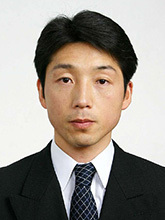(3) Structure-function analysis of mammalian cytochromes P450
(i) Prediction of dioxin metabolism in human liver
Metabolism of polychlorinated dibenzo-p-dioxins by cytochrome P450 (P450) and UDP-glucuronosyltransferase (UGT) was examined using a recombinant enzyme system and human liver microsomes. A good correlation (R = 0.92) was observed between 2,3,7-triCDD 8-hydroxylation and phenacetin O-deethylation in human liver microsomes, suggesting that CYP1A2 is responsible for 2,3,7-triCDD 8-hydroxylation in human livers. On the other hand, multiple human UGT isozymes showed glucuronidation activity toward 8-hydroxy-2,3,7-triCDD (8-OH-2,3,7-triCDD). Of these UGTs, UGT1A1, 1A9, and 2B7, which are constitutively expressed in human livers, showed remarkable activity toward 8-OH-2,3,7-triCDD. These results strongly suggest that 2,3,7-triCDD would be firstly converted to 8-OH-2,3,7-triCDD by CYP1A2, then further converted to its glucuronide by UGT1A1, 1A9, and 2B7 in human liver.






